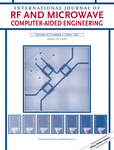Enhanced head phantom for wearable microwave tomography devices evaluation
Abstract
In this article, an inhomogeneous multi-layer semi-solid human head phantom introduces to use in the validation of wearable microwave tomography (WMWT) devices. The intracranial tissues (gray matter [GM], white matter [WM], dura, cerebrospinal fluid [CSF], cerebellum, spinal cord), and skin were mimicked using semi-solid artificial tissue emulating (ATE) materials. The electrical properties of mimicked tissues are measured and compared with real human head tissues at 0.5–4.5 GHz spectrum. The novelty of the proposed phantom is the presence of the skin layer with a high dielectric constant and a realistic skull layer in terms of electrical and anatomical properties. These layers have a critical role in on-body antenna performance and make the proposed phantom a useful tool for the evaluation of WMWT devices, as well as microwave tomography ones. The phantom was simulated and fabricated as an eight-layer model. For evaluation, a comparison was made between the simulated and measured reflection coefficients of a reference on-body antenna located at the numerical model and fabricated phantom, respectively. The results suggest that the head proposed phantom can be considered an effective tool for WMWT instruments.
Open Research
DATA AVAILABILITY STATEMENT
The data that support the findings of this study are available from the corresponding author upon reasonable request.




